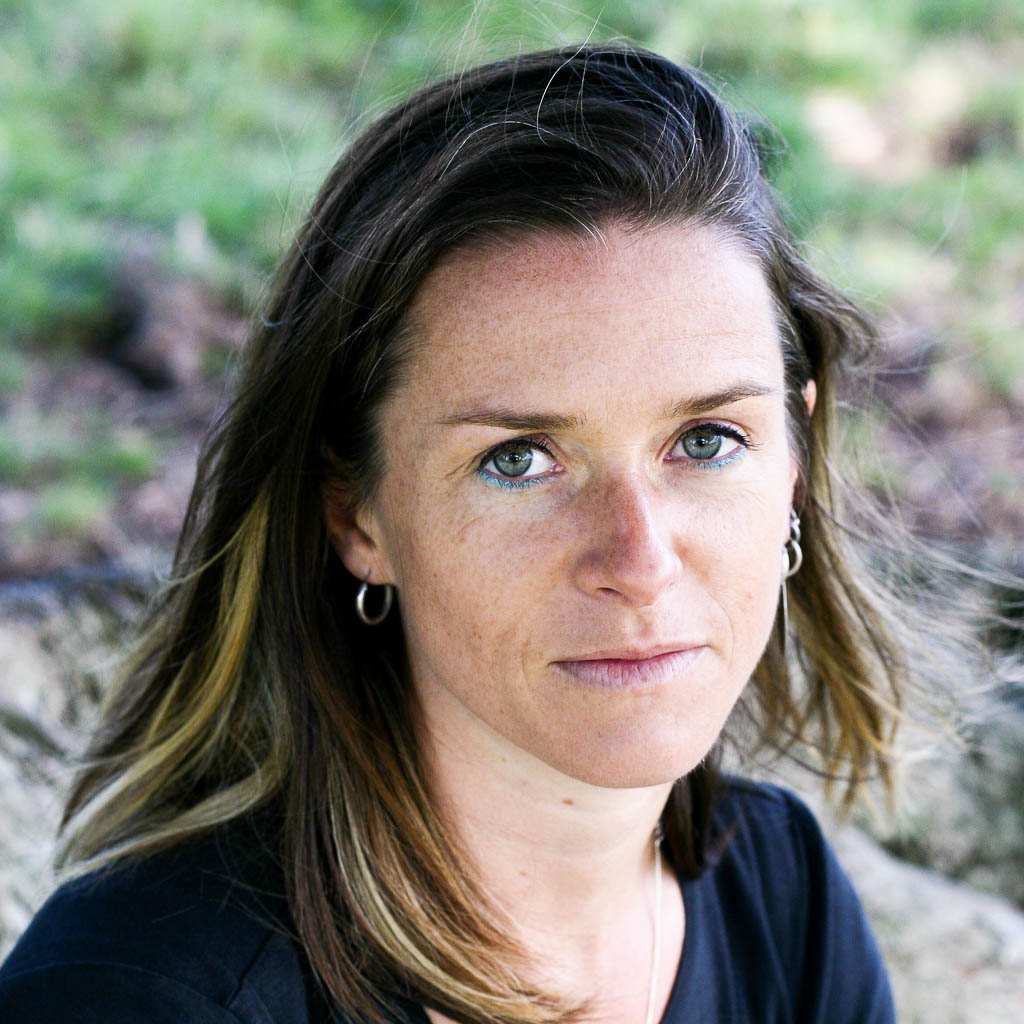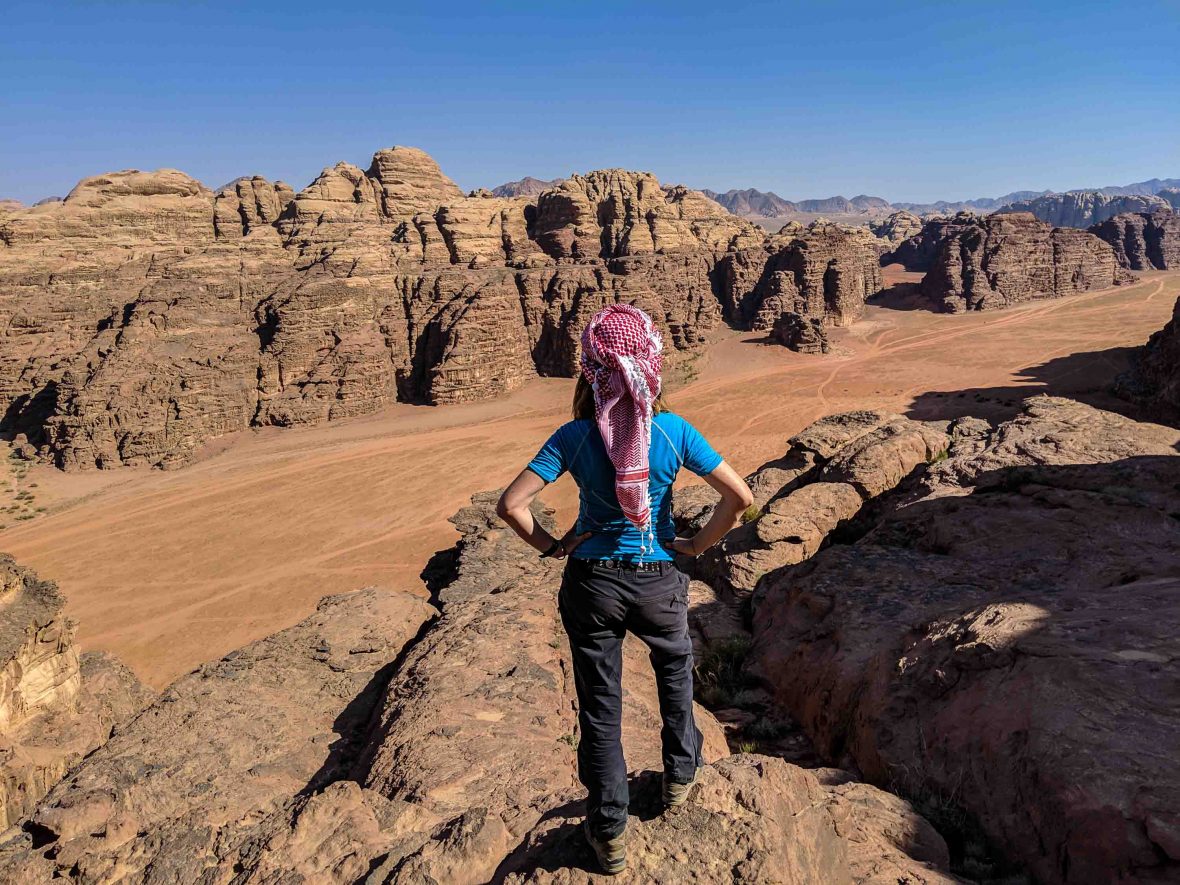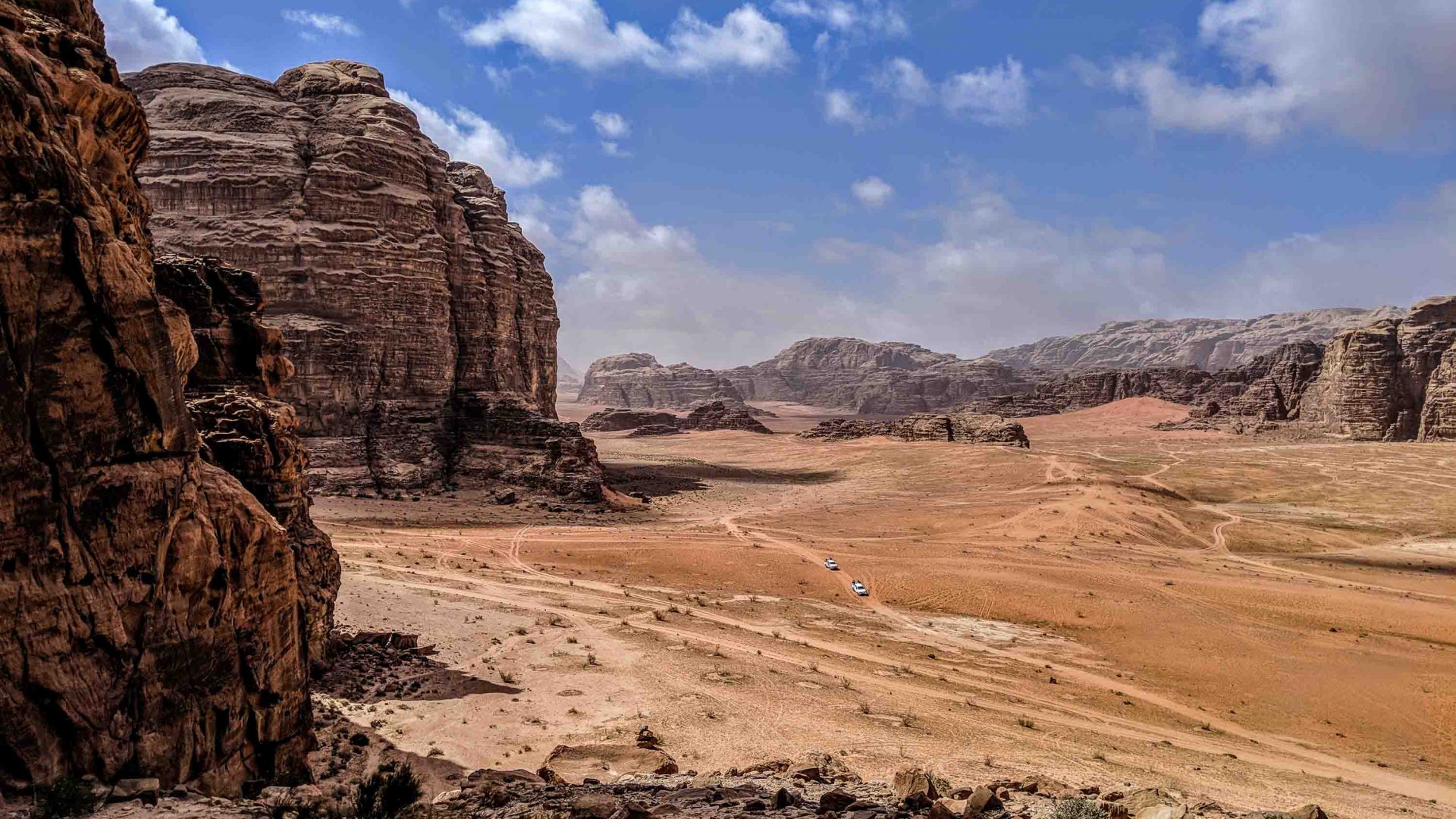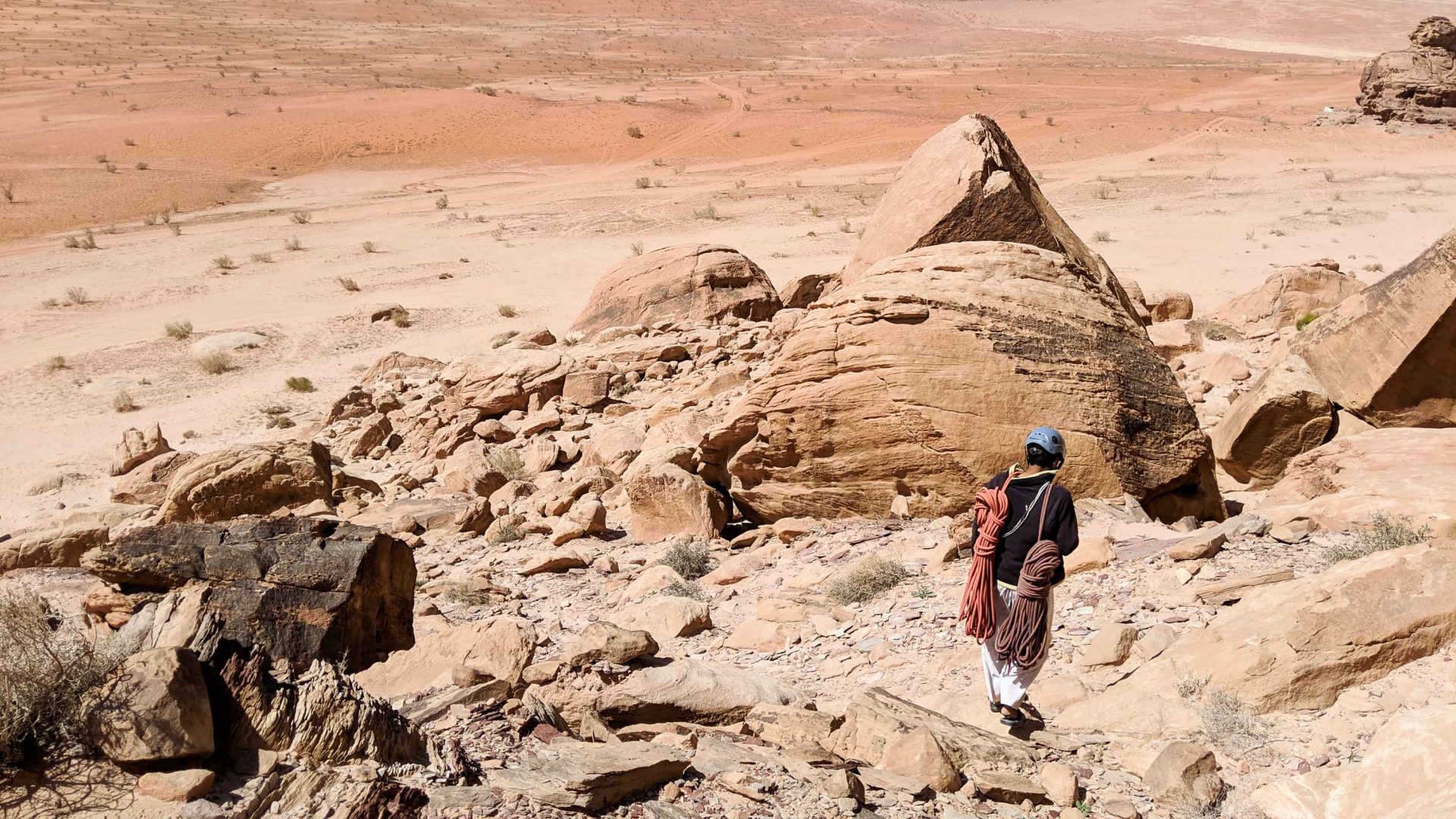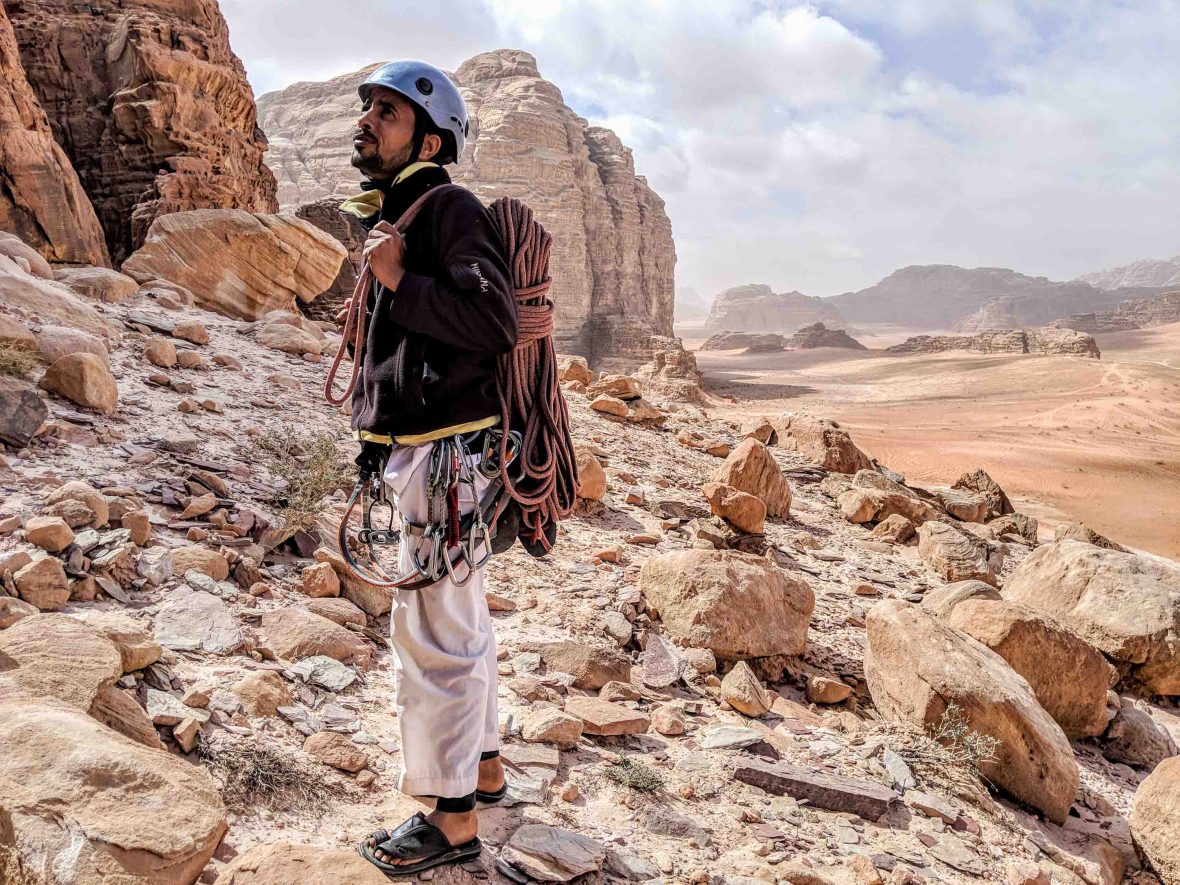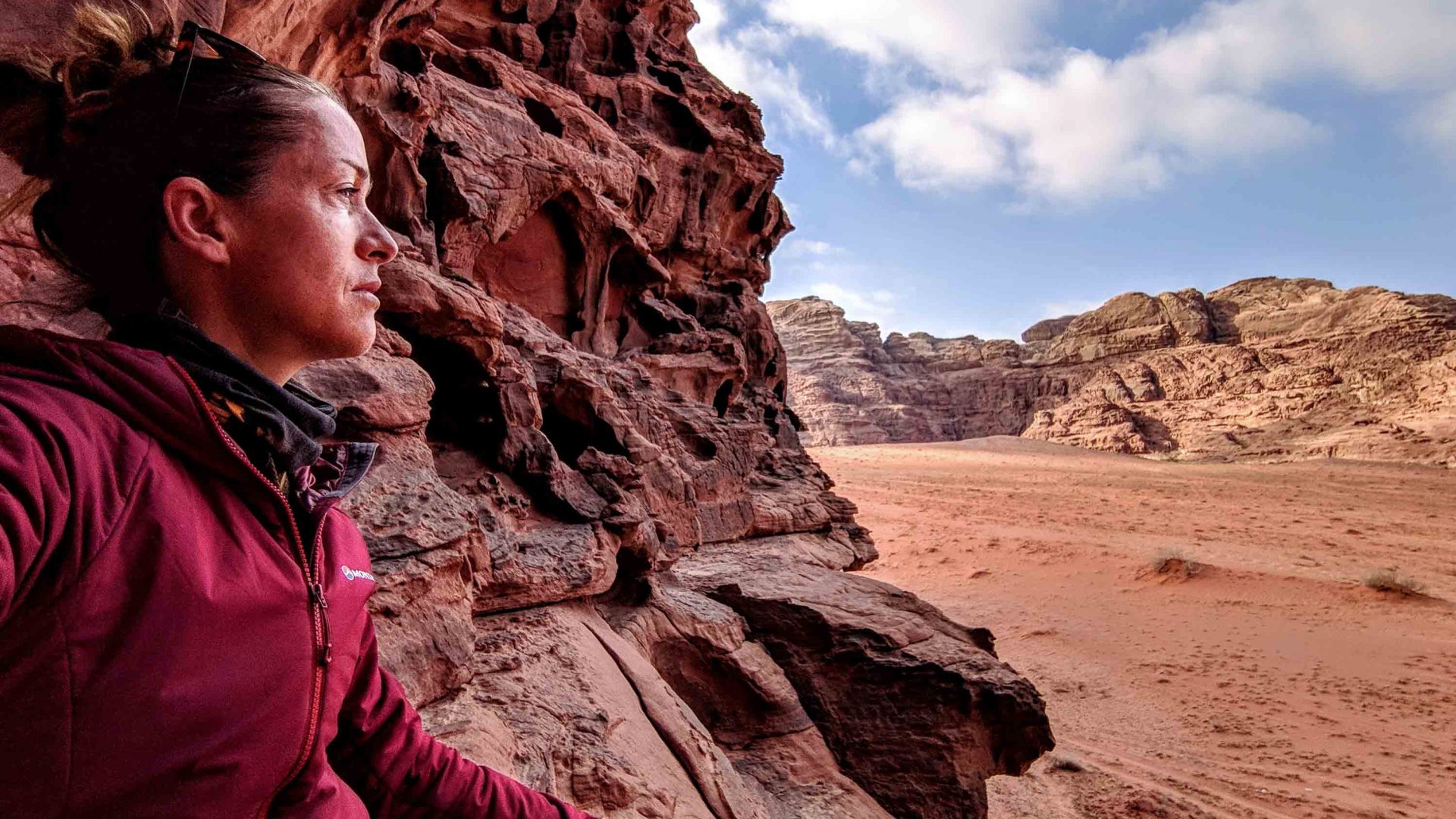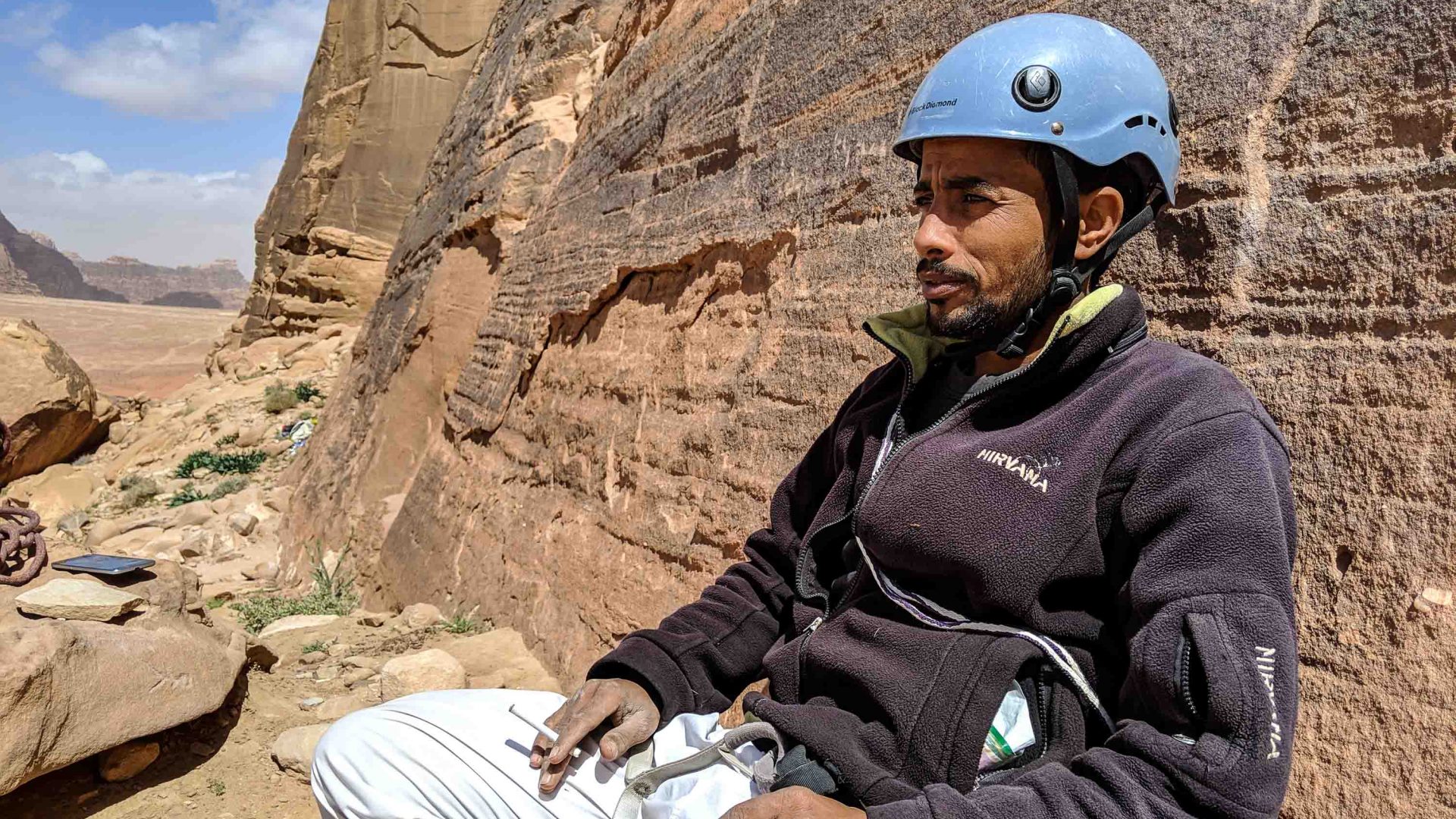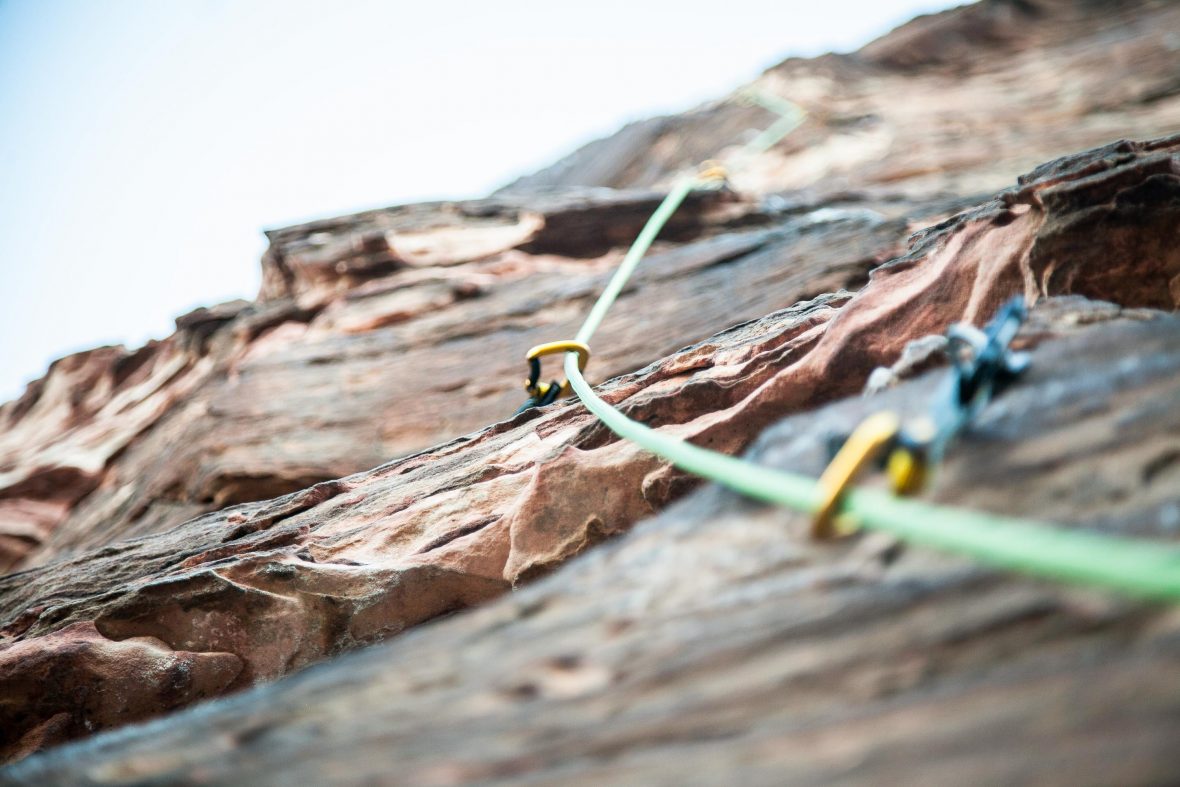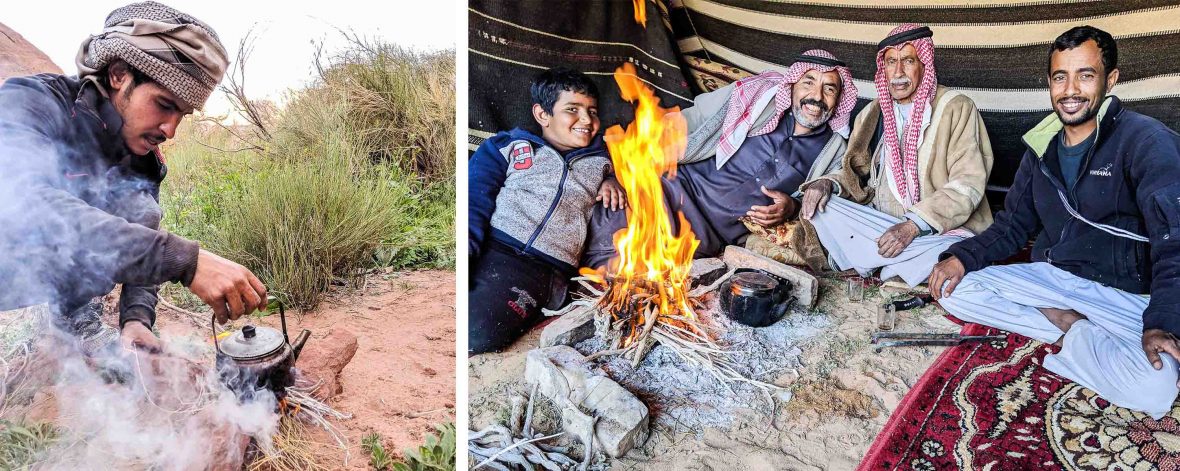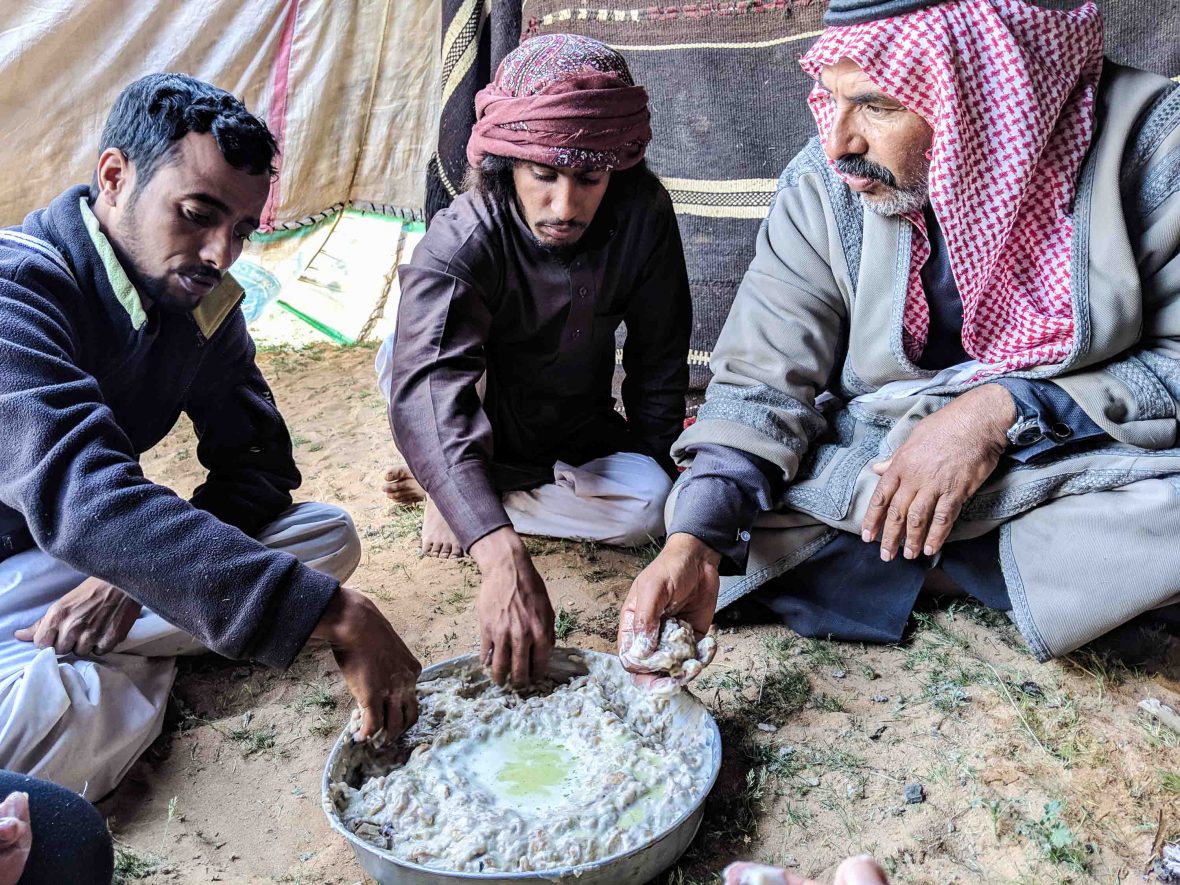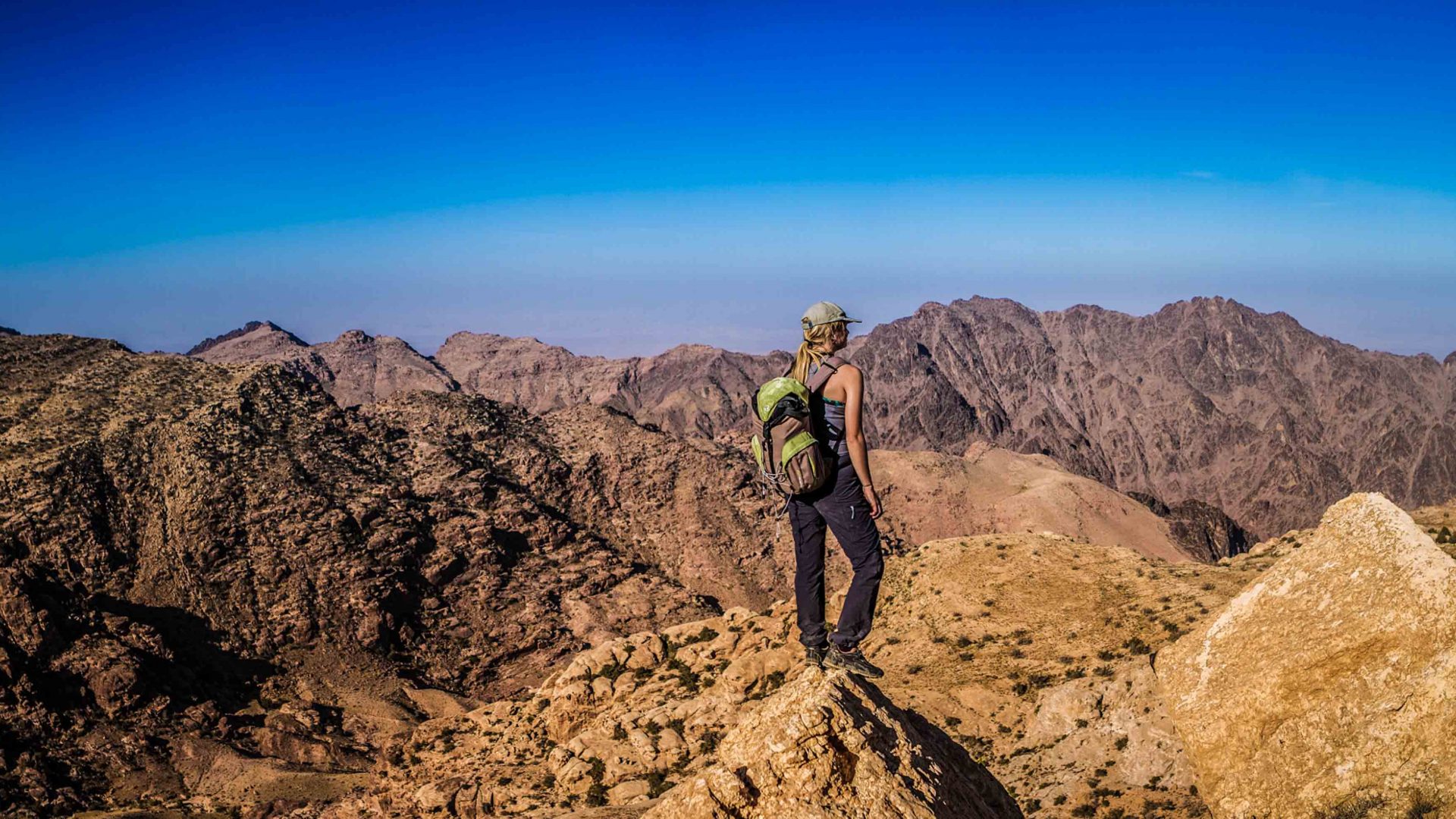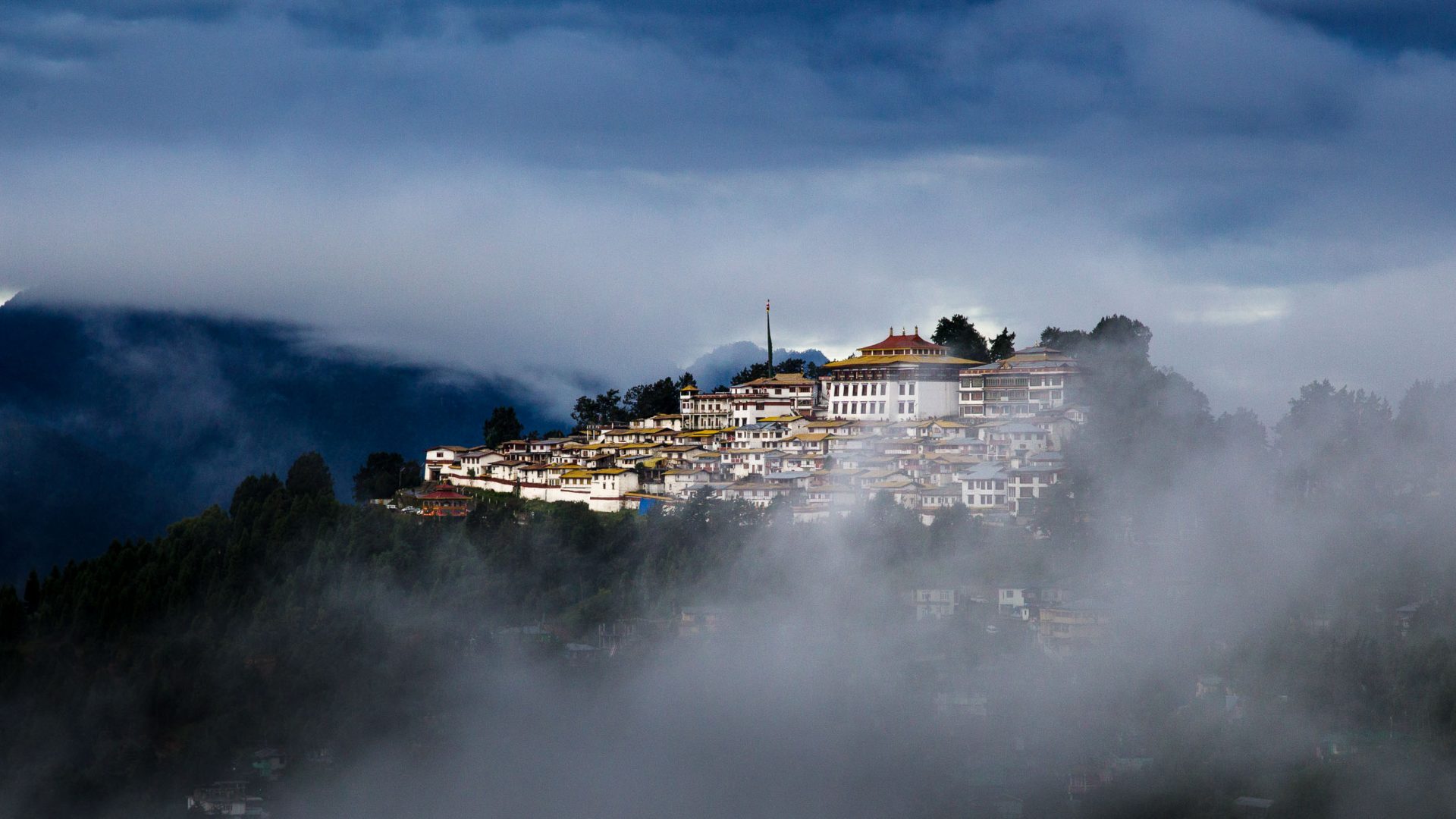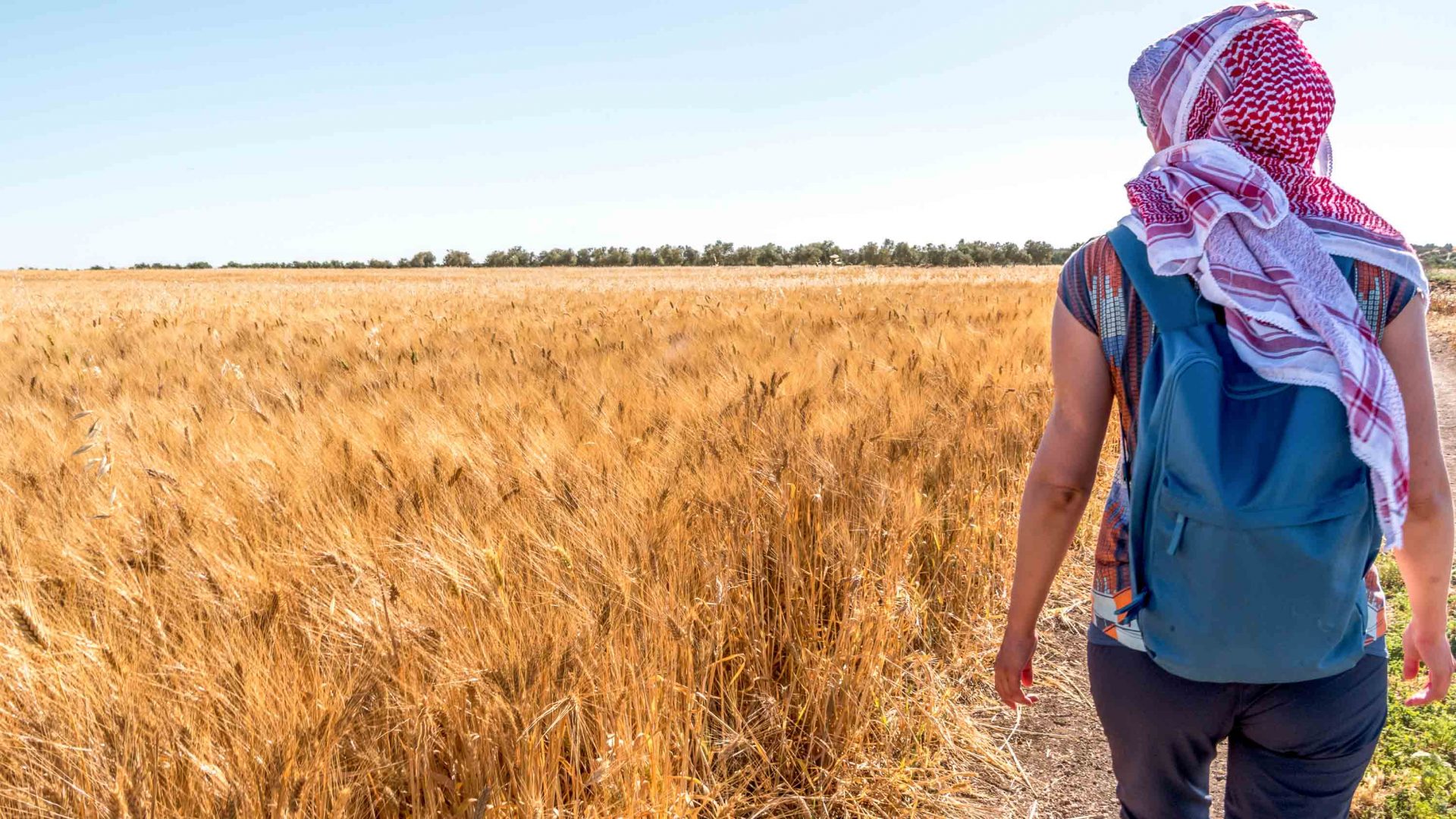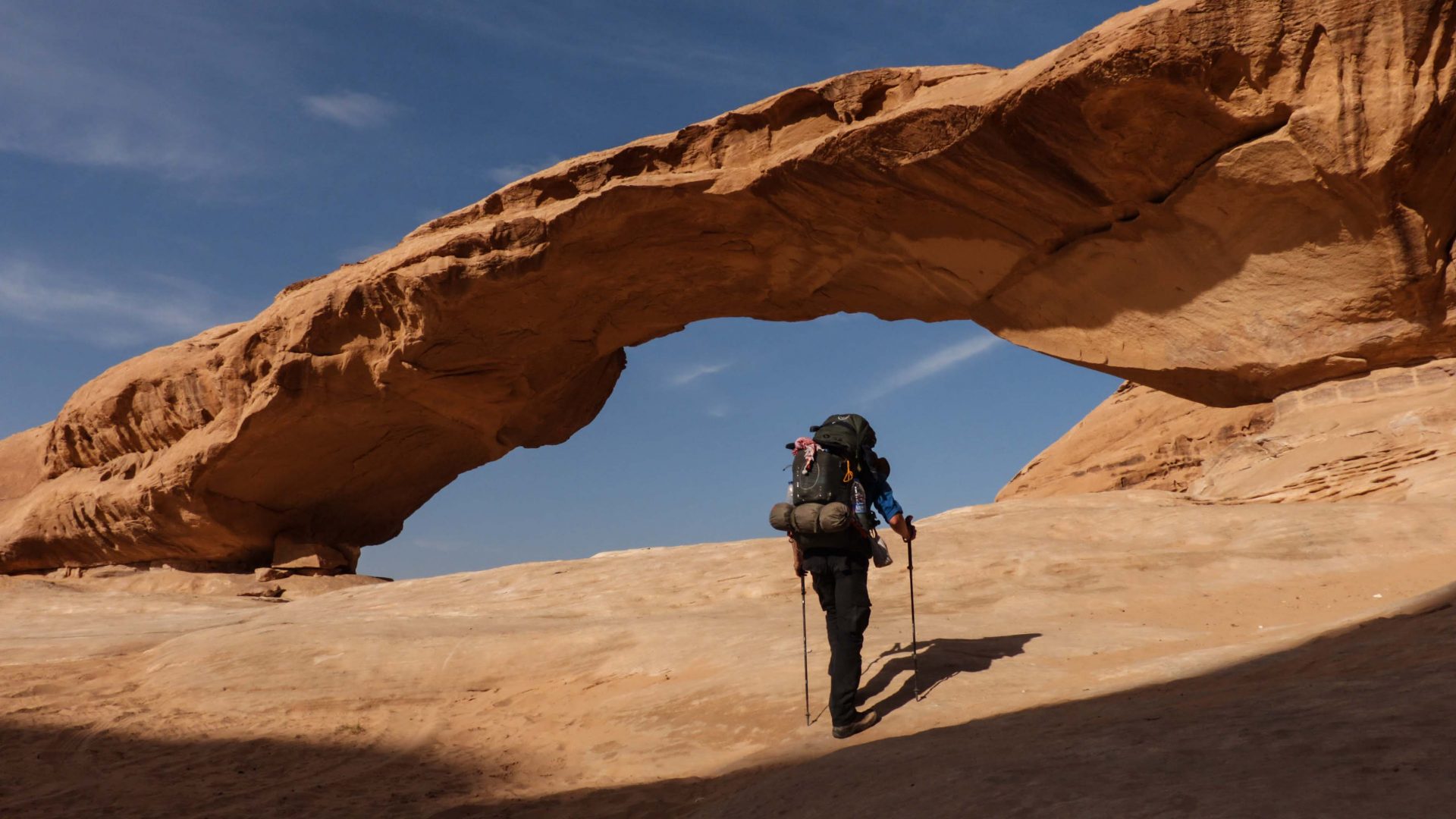Fewer than a thousand people a year go rock-climbing in Wadi Rum, and yet this magnificent landscape is the ultimate playground for it, finds amateur climber Antonia Bolingbroke-Kent.
I dig the toes of my climbing shoes into the rough sandstone wall and turn to look at the view. Far below me spreads the valley floor, its tangerine sands carved into fields of light and shadow by wads of drifting cloud.
Camels graze, a lone goatherd watches their flock, and everywhere, strange, sheer mountains lie strewn across the landscape like gargantuan slabs of chocolate cake, petrified mid-melt. No wonder T.E Lawrence (aka Lawrence of Arabia) loved this place. “Rum the magnificent,” he called it, “vast, echoing and god-like.”
Just over a century after Lawrence instigated the Arab Revolt in these “stupendous hills”, Wadi Rum is a 725-square-kilometer UNESCO World Heritage Site in Jordan’s far south. The star of numerous films (The Martian, Prometheus, Star Wars and, of course, Lawrence of Arabia, to name a few) and a poster boy of the country’s resurgent tourism industry, most visitors come here from Petra, pausing for a few hours, or a night at most, to ride a grumbling camel and take a desert selfie.
But it’s not just tour groups and film crews who flock to this ‘Valley of the Moon’. Since Tony Howard—of Troll Wall fame—led the first climbing expedition here in 1984, Wadi Rum’s mountains have gained a reputation as being among the best desert climbs on earth. And as a recent convert to rock-climbing, I can’t think of a better way to experience the majesty of this scene.
RELATED: The Middle East’s new ‘Inca Trail’
It’s a blustery spring afternoon when my guide, Abdullah Dakhilallah from the locally run Shabab Sahra guide association, parks his Toyota pick-up at the base of Jebel Mzaigh, a rust-red monolith bulging from the sands south of Rum village. Abdullah and his brother Atallah founded Shabab Sahra’s Desert Youth Climbing Club in 2014 and have since been trained by the Swedish NGO, Operation Mercy.
Shouldering ropes and stepping into harnesses, we pick our way across a boulder field to its smooth western face, Abdullah bounding ahead with ibex-like agility. A Bedouin from the local Zelabiah tribe, his people have been scaling these mountains to hunt ibex for over 2,000 years. Climbing is in his DNA.
Abdullah double-checks my knot and then I’m off—fingers feeling into the gaps, toes digging into barely-there ridges, clipping myself in to each bolt as I ascend. Soon my mind empties, the physical and mental effort of scaling the wall forcing me into the moment.
At times, fear makes me falter. ‘Stand up! You can do it!’ I tell myself. I growl determinedly, reminding myself to trust the friction of my feet against the sandstone.
RELATED: How routine can help you climb mountains and conquer anything
Clipping myself in to the top bolt, I turn to look at the view. By gad, it’s magnificent! Shaking with adrenaline, I begin to laugh; an involuntary upwelling of joy brought on by the sheer exhilaration of being right here, right now, in this extraordinary place.
It brings back memories of the first time I climbed outdoors, the previous year in Macedonia: A surge of fear—then, when I’d overcome the problem and grunted to the top—an overwhelming endorphin rush that made me want to weep with joy. I struggle to think of anything else that makes me feel this way.
Between climbs, we pause for tea, Abdullah whipping out a smoke-blackened kettle and conjuring a fire from a few parched twigs. A small, voluble sprite of a man who talks and smokes in equal measures, we talk more about his love for climbing. “My people have always climbed these mountains to hunt and collect medicinal plants,” he tells me. “We only started climbing with ropes after Tony Howard came here. This is my dream, to climb and show visitors our mountains.”
Fewer than a thousand climbers come to Wadi Rum each year, and not everyone hires local guides when they do, but—alongside trekking and wild camping—this type of low-impact tourism provides valuable income that helps him support his large family. “My father had a stroke last month and was in hospital,” Abdullah says, “and the money we got from tourists helped us pay for his treatment.”
It’s late afternoon when we leave Jebel Mzaigh and drive 20 kilometers farther into the desert to meet Abdullah’s parents. One of the last truly nomadic families in this area, they live in a huddle of black goat-hair tents near the border with Saudi Arabia.
Here, we sit around a smoking fire drinking tea with his mother, Nasra, a handsome woman in a long black dress, whose bright eyes, ready smile and conker-smooth skin belie the harshness of her desert existence and the 13 children she’s given birth to out here. Later, we eat fatteh—a Bedouin dish made from bread, goat’s yogurt and desert herbs—rolling up our sleeves and digging our fingers in to the shared bowl with gusto.
We spend that night in a cave in the desert, pressing around the fire to drink tea and warm flatbread in the ashes. A waxing moon rises into the glittering sky and I climb into my sleeping bag and lie, for what seems like hours, entranced by the silent, starry night. I ask Abdullah if he’d like to live out here, in the desert, as his parents and ancestors have always done. “Yes!” he says. “When our children have finished school, my wife and I will return to live in the desert. It’s in my blood.”

